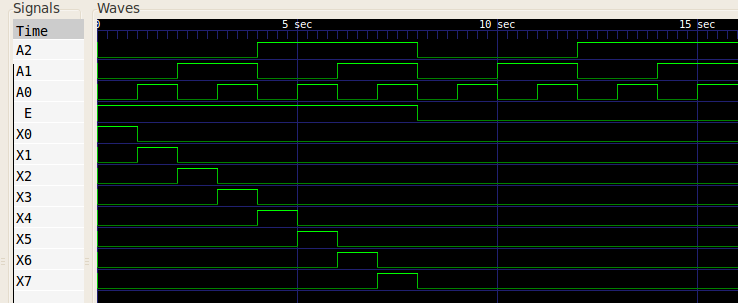Demultiplexer
An N-line demultiplexer, a.k.a. a 1-to-N demultiplexer, is used to assign a single input line to one of N output lines. It performs the opposite job of a multiplexer. The output line which is used depends on a B-bit selection input where B=ceil(log2N). Here "ceil" is the ceiling function which returns the smallest integer greater than or equal to its argument.
The demultiplexer can be seen as a decoder which has an enable signal, and to show how, consider
an 8-line demultiplexer with input line A, output lines X0, ..., X7,
and selection bits S0, S1, and S2.
The following table shows how to map the demultiplexer's inputs and outputs to the octal decoder's so that it performs a demultiplex function.
| Demultiplexer | Decoder |
|---|---|
Xn | Xn |
Sn | An |
A | E |
When simulated with test inputs, the decoder gives the following waveform which matches the specification of the demultiplexer
— the binary code A2 A1 A0 is decoded to select one of the Xn lines which then has the same value as the
E input.

References
Kleitz, W. Digital Microprocessor Fundamentals. 3rd Edition. Prentice Hall, 2000.
Mano, M. Morris, and Kime, Charles R. Logic and Computer Design Fundamentals. 2nd Edition. Prentice Hall, 2000.